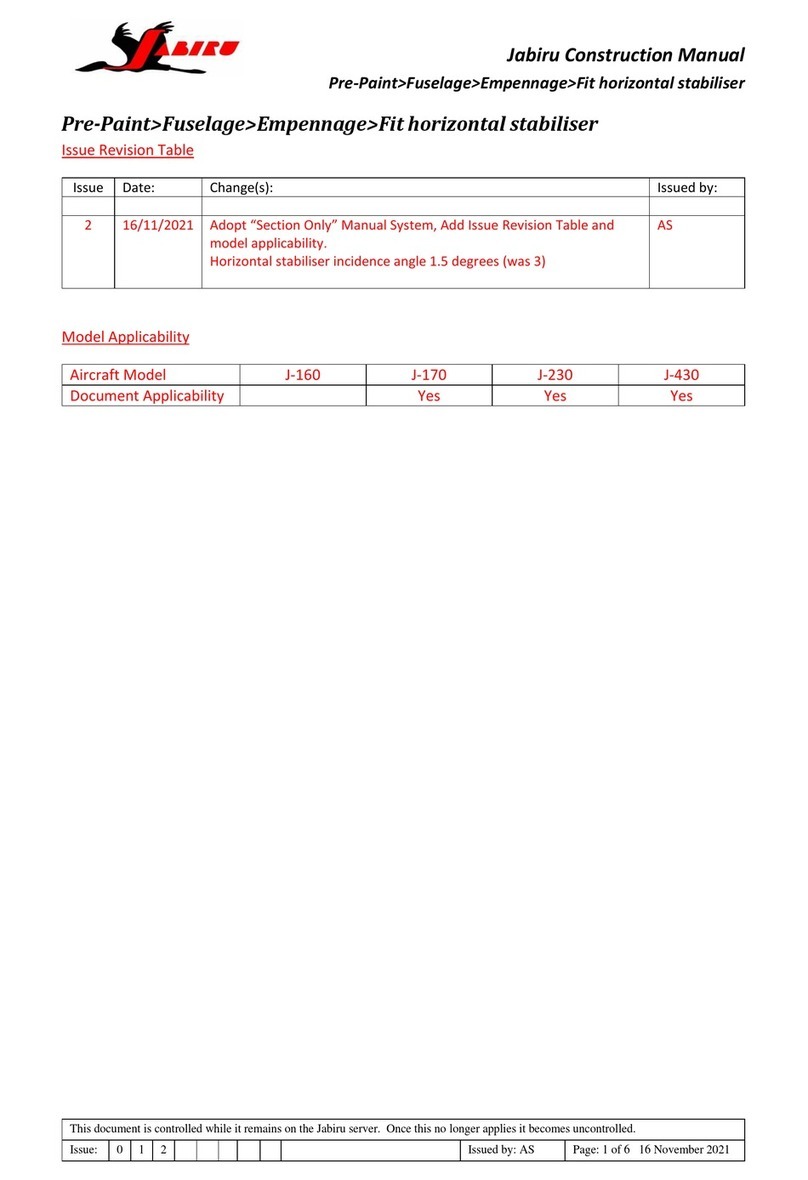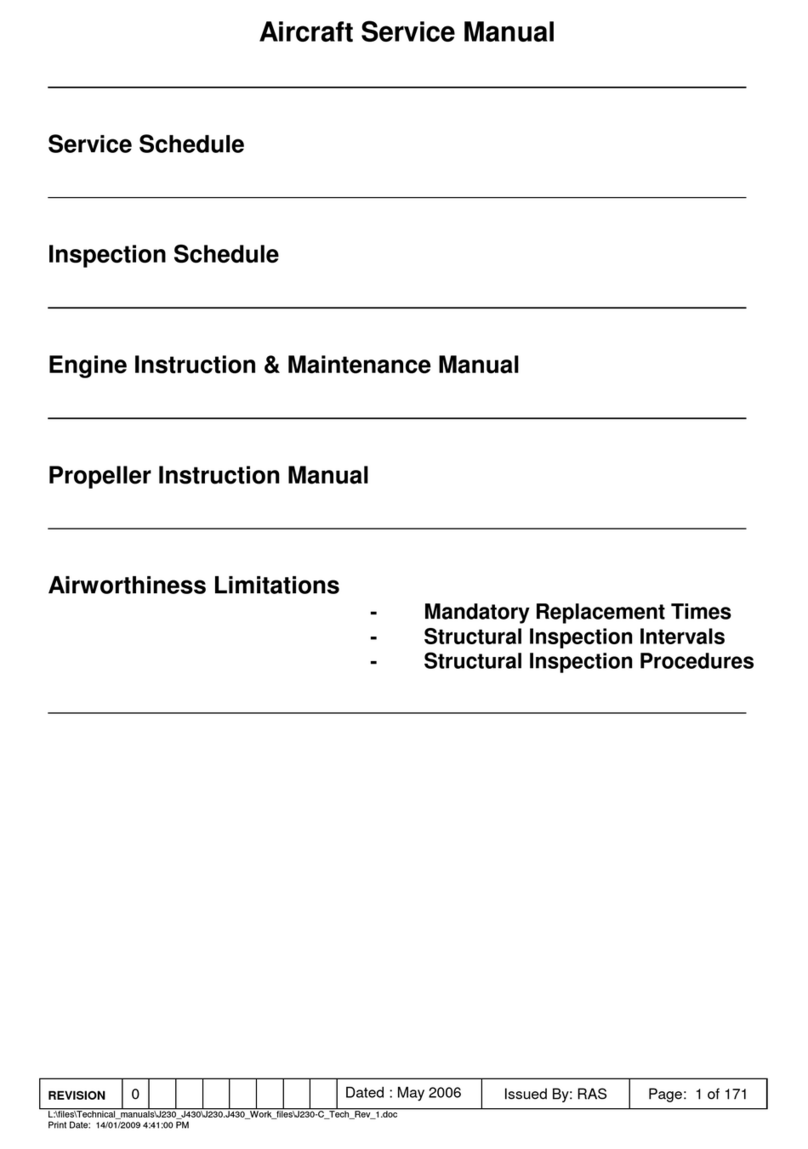
Jabiru Aircraft
CASA APPROVED Model J160-C
JP-FM-06 Revision: 01 2 3 21 Sep 2006 Page iv
LOG OF EFFECTIVE PAGES
Page Date Page Date Page Date
(i)* 1st December 2008 4-1* 1st December 2008 7-1 1st December 2008
(ii)* 1st December 2008 4-2* 1st December 2008 7-2 1st December 2008
(iii)* 1st December 2008 4-3* 1st December 2008 7-3 1st December 2008
(iv)* 1st December 2008 4-4* 1st December 2008 7-4 1st December 2008
(v)* 1st December 2008 4-5* 1st December 2008 7-5 1st December 2008
4-6* 1st December 2008 7-6 1st December 2008
1-1 21 September 2006 4-7* 1st December 2008 7-7 1st December 2008
1-2 21 September 2006 4-8* 1st December 2008 7-8 1st December 2008
1-3 21 September 2006 4-9* 1st December 2008 7-9 1st December 2008
1-4 21 September 2006 4-10* 1st December 2008 7-10 1st December 2008
1-5 21 September 2006 4-11* 1st December 2008 7-11 1st December 2008
1-6 21 September 2006 4-12* 1st December 2008 7-12 1st December 2008
1-7 21 September 2006 7-13 1st December 2008
1-8 21 September 2006 5-1* 21 December 2005 7-14 1st December 2008
1-9 21 September 2006 5-2* 21 December 2005
1-10 21 September 2006 5-3* 21 December 2005 8-1 21 December 2005
5-4* 21 December 2005 8-2 21 December 2005
2-1* 8th March 2007 5-5* 21 December 2005 8-3 21 December 2005
2-2* 8th March 2007 5-6* 21 December 2005 8-4 21 December 2005
2-3* 8th March 2007 5-7* 21 December 2005 8-5 21 December 2005
2-4* 8th March 2007 5-8* 21 December 2005 8-6 21 December 2005
2-5* 8th March 2007 5-9* 21 December 2005 8-7 21 December 2005
2-6* 8th March 2007 5-10* 21 December 2005 8-8 21 December 2005
2-7* 8th March 2007 8-9 21 December 2005
2-8* 8th March 2007 6-1 21 September 2006 8-10 21 December 2005
2-9* 8th March 2007 6-2 21 September 2006
2-10* 8th March 2007 6-3 21 September 2006 9-1 21 December 2005
2-11* 8th March 2007 6-4 21 September 2006 9-2 21 December 2005
2-12* 8th March 2007 6-5 21 September 2006
2-13* 8th March 2007 6-6 21 September 2006
2-14* 8th March 2007 6-7 21 September 2006
6-8 21 September 2006
6-9 21 September 2006
6-10 21 September 2006
3-1* 21 September 2006 6-11 21 September 2006
3-2* 21 September 2006 6-12 21 September 2006
3-3* 21 September 2006 6-13 21 September 2006
3-4* 21 September 2006 6-14 21 September 2006
3-5* 21 September 2006 6-15 21 September 2006
3-6* 21 September 2006 6-16 21 September 2006
3-7* 21 September 2006 6-17 21 September 2006
3-8* 21 September 2006
3-9* 21 September 2006
3-10* 21 September 2006
3-11* 21 September 2006
*indicates APPROVED pages
Date:
Approved by the Civil Aviation Safety Authority Australia





































